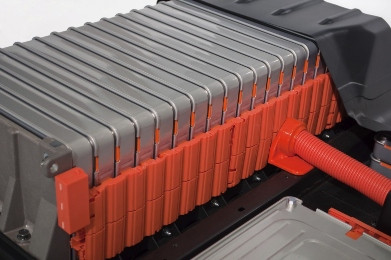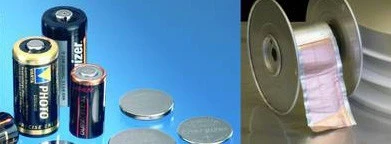Batteries
- Lithium
- Lithium 101
- About Lithium
- Products
- Markets & Applications
- - Additive for Construction Materials
- - Air Conditioners / Gas & Air Treatment
- - Aluminum Electrolysis
- - Batteries & Accumulators
- - Brazing
- - Catalysis
- - Dyes & Pigments
- - Enamels & Ceramics
- - Getter
- - Lubricant Greases
- - Metallurgy
- - Optical Products & Glass
- - Organic Synthesis
- - Pyrotechnics
- - Rubber & Plastics
- - Scintillation / Medical Imaging
- Resources / Recycling
- Contact Us
Secondary (rechargeable) Batteries

Lithium combines the highest electrochemical potential with a low equivalent mass. These properties are the reason why lithium has become very attractive for lithium ion batteries (LIB). Lithium ion batteries are high-energy-density power sources, especially important to all mobile applications where mass matters. At the same time these devices are also capable of high charge discharge rates, the second important requirement for utilization in mobility applications to achieve powerful acceleration in cars and e-bikes, as well as charge acceptance for energy recuperation during braking. The most important application of lithium salts in LIB technology is their use in cathode material production. Many ten thousands of tons of different cathodes are being produced on the globe per year using a growing amount of lithium salts. The main source of lithium in this application is currently Li2CO3 (lithium carbonate), followed by LiOH*H2O (lithium hydroxide monohydrate).
Primary (non-rechargeable) Batteries

The lithium anodes can be manufactured from pure, high quality lithium metal (Na < 200 ppm), which guarantees very good processing properties (Mohs’ hard-ness 0.6). The bulk material can be transformed into soft foils, with thicknesses as low as 30μm.
Special Lithium Salts
Besides the application of lithium metal in primary and secondary (polymer) lithium batteries, numerous lithium salts are used in electrolytes for these applications, too. These salts include lithium hexafluorophosphate, bis-(oxalate)borate, fluoride, chloride, bromide, iodide, perchlorate, and many more.
Next Generation Batteries
LIB technology in its current form is continuously being developed to improve the specific capacities and power densities; however, the next generation of lithium batteries is on the horizon already. Lithium/sulfur- and lithium/air technologies have successfully proven their capabilities. They are now engineered to become useable in mobile devices. New materials are under development to satisfy the requirements of this new generation of lithium technology.



